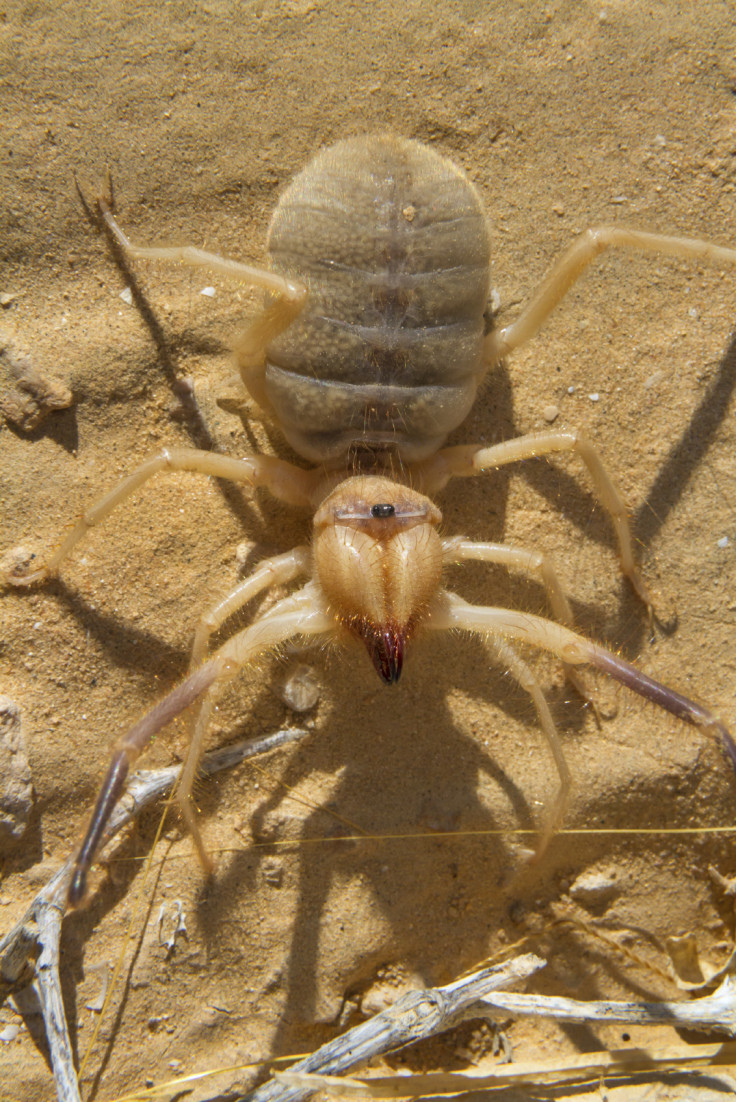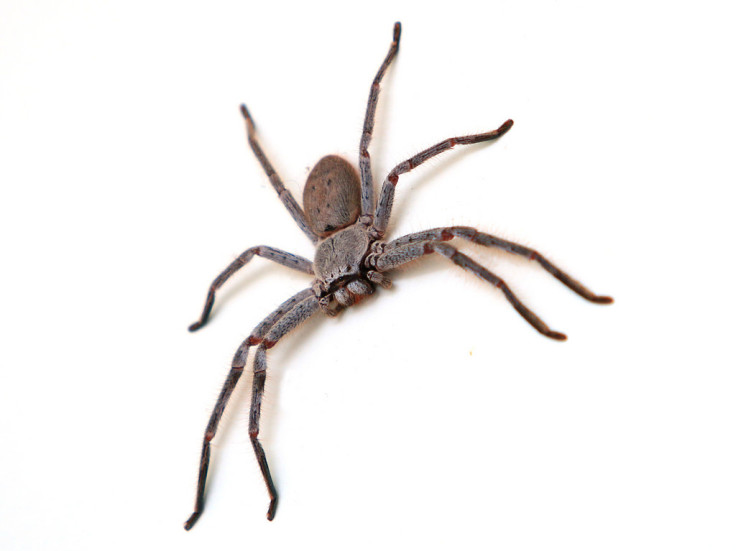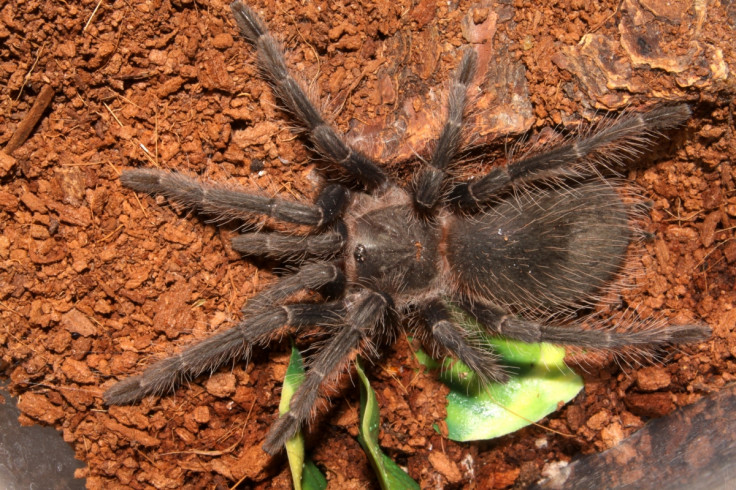Huntsman, Goliath Birdeaters and Camel Spiders: What are the world's five biggest arachnids?
A fear of spiders is the third biggest phobia among humans (after death and public speaking).
According to the Statistic Brain Research Institute, arachnophobia affects 30% of every person in the US.
It's probably best not to show them these photographs then of the world's biggest spiders...
Camel Spider

Camel spiders (Solifugae) are a cross between spiders and scorpions. It appears that they have 10 legs, but two at the front are actually sensory organs, so just like every other spider, they have eight.
They can grow up to 15cm – 30% bigger than the average mouse from the top of its head to the bottom of its tail.
They live in hot, dry environments – just about every desert there is apart from those in Antarctica and Australia.
They usually feed on termites and small insects, but they are aggressive, angry hunters, and they have been recorded munching on snakes, rodents and lizards. They use their huge chelicerae, or jaws, to break their prey into small pieces, before the pieces are liquefied and ingested.
Never fear though, they don't eat humans. Camel spider bites are very rare, but they can break through human skin with their powerful jaws, and they have been reported to bite people when threatened.
Huntsman Spider

The Huntsman spider (Palystes castaneus) have eight beady eyes — one of the reasons they are such successful predators, along with their quick speed and immobilising venom.
The largest individuals have been reported as 30cms long.
These massive spiders are mostly found across Australia, although they have cropped up in other parts of the world, including South America and the US. In Africa, they are known are 'rain spiders', because they sneak into people's homes to get out of the rain.
As big hunters, male huntsman spiders do not make webs and wait for their prey to get trapped. They are not that patient. They forage for their food, using their darting pace to attack small insects, geckos and small skinks.
These spiders do bite, however. Not only that, but they tend to cling to people once they've bitten, so they can be difficult to shake off. The effects of these bites range from swelling and aches, to headaches, fever and even vomiting.
Goliath Birdeater Spider

This huge tarantula (Theraphosa blondi) is definitely the stuff of nightmares.
They are generally found in South America; northern Brazil and Venezuela and, as their name suggests, have been known to eat small birds – although it's very rare.
The Goliath Birdeater Spider has a leg-span of 28cm – five centimetres longer than the height of a bottle of Coca-Cola, and it weighs around 170g.
Their killer fangs contain venom, and they can make horrific noises by rubbing the hairs on their legs to ward off predators.
They generally eat toads and earthworms, but seeing as their food is becoming scarcer, they have recently been seen to eat rodents and larger amphibians and reptiles.
Brazilian Salmon Pink Birdeater

This species (Lasiodora parahybana) is another type of tarantula. It has a leg span of around 28cms; the size of some Apple MacBook Air screens.
Found normally around Campina Grande, Brazil, these guys have a very painful bite. Their fangs can reach an inch long, but they tend to harm people (and prey) by flicking their urticating hairs on their abdomen – making them cactus-like. These hairs are very irritating to the skin, and people have gone blind from hairs getting into their eyes.
The spider has been known to 'shoot' these hairs at its prey when hunting, including insects, frogs, lizards and mice. The hairs disable the food, and then the tarantula spits digestive juices over the prey – effectively digesting it before it's even dead.
Poecilotheria rajaei Spider

This species of tarantula was discovered just seven years ago on the island of Sri Lanka. Its grey colour blends in well with tree bark and rocks, and it packs a venous bite capable of killing small birds and snakes.
With a leg span of about 19cms, it is too big to fit in the average kitchen saucepan.
It was discovered when a Sri Lankan local found a dead Poecilotheria rajaei in the woods, and gave it to scientists for analysis. The same scientists later found plenty more of the species living deep in the forests of Sri Lanka, and it was officially discovered.
These spiders do bite humans, but the venom is not lethal. It is, however, fatal to other wildlife including snakes, birds, rodents and lizards.
A rough estimate for population sizes of these spiders is still unknown. That said, researchers have reported that they are already declining in numbers, because of deforestation and habitat loss.
© Copyright IBTimes 2025. All rights reserved.






















